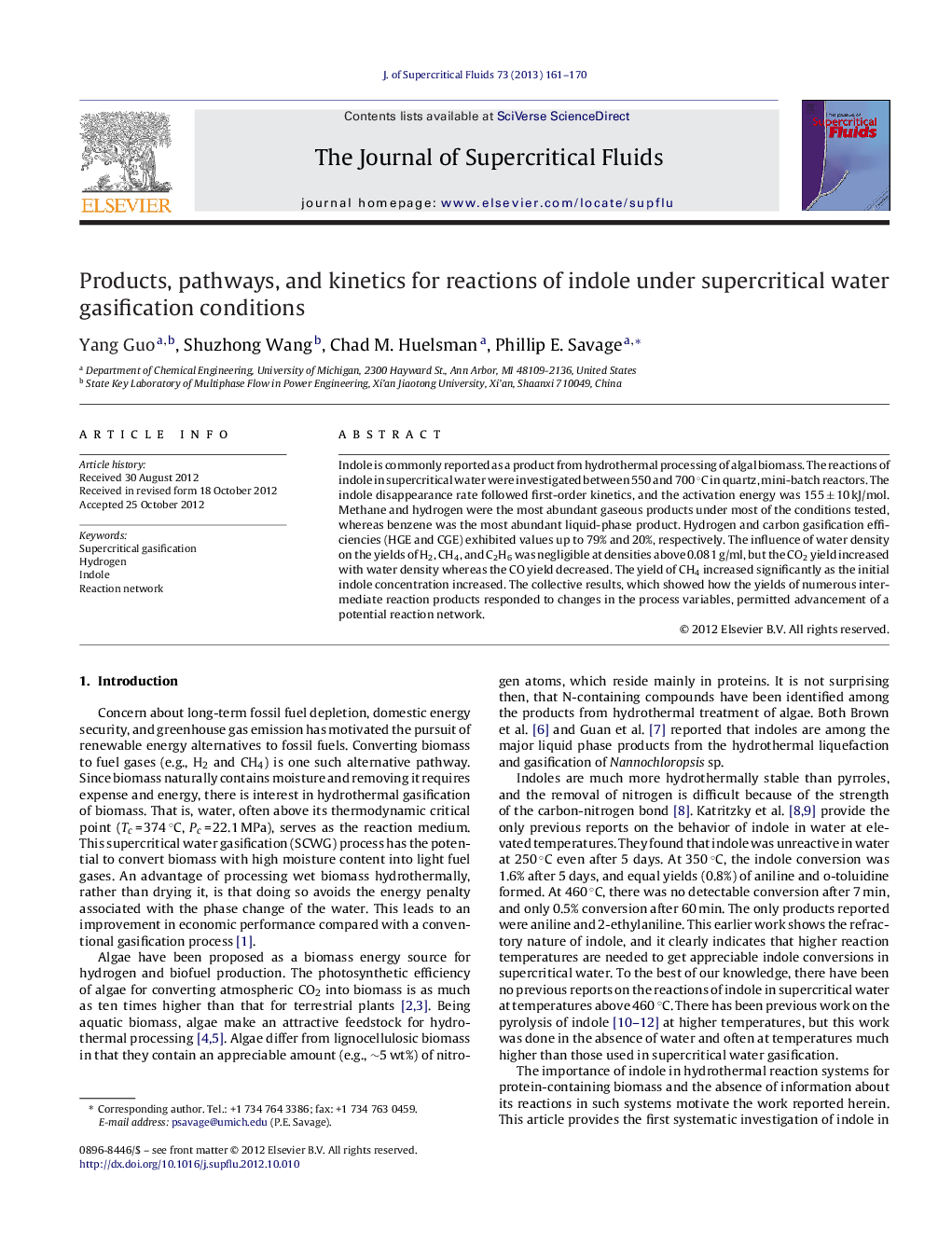| Article ID | Journal | Published Year | Pages | File Type |
|---|---|---|---|---|
| 230666 | The Journal of Supercritical Fluids | 2013 | 10 Pages |
Indole is commonly reported as a product from hydrothermal processing of algal biomass. The reactions of indole in supercritical water were investigated between 550 and 700 °C in quartz, mini-batch reactors. The indole disappearance rate followed first-order kinetics, and the activation energy was 155 ± 10 kJ/mol. Methane and hydrogen were the most abundant gaseous products under most of the conditions tested, whereas benzene was the most abundant liquid-phase product. Hydrogen and carbon gasification efficiencies (HGE and CGE) exhibited values up to 79% and 20%, respectively. The influence of water density on the yields of H2, CH4, and C2H6 was negligible at densities above 0.081 g/ml, but the CO2 yield increased with water density whereas the CO yield decreased. The yield of CH4 increased significantly as the initial indole concentration increased. The collective results, which showed how the yields of numerous intermediate reaction products responded to changes in the process variables, permitted advancement of a potential reaction network.
Graphical abstractFigure optionsDownload full-size imageDownload as PowerPoint slideHighlights► Kinetic study of indole SCWG. ► Quantitative and qualitative analysis on gas and liquid products. ► Char precursor formation pathways. ► Reaction network for indole SCWG.
